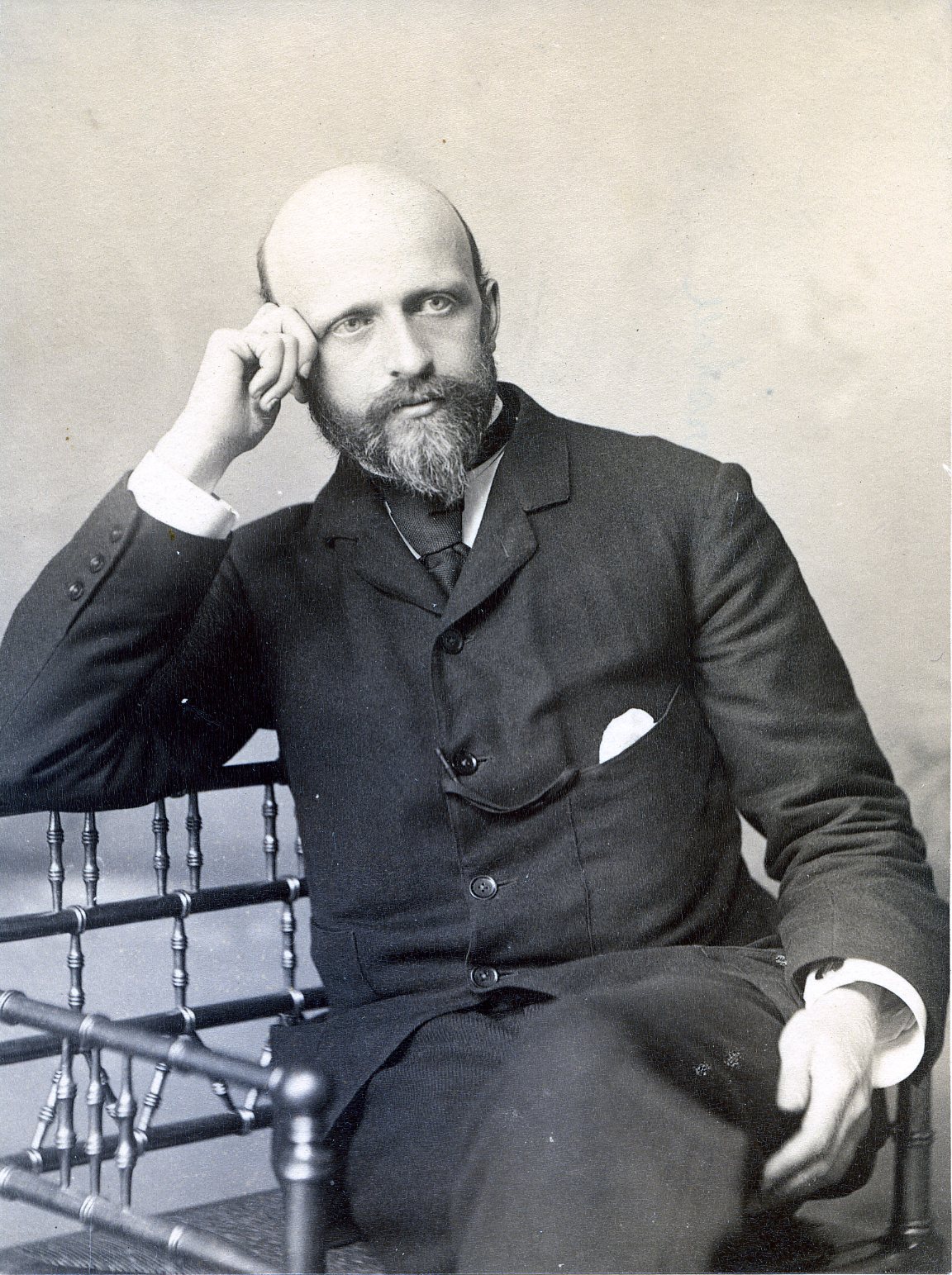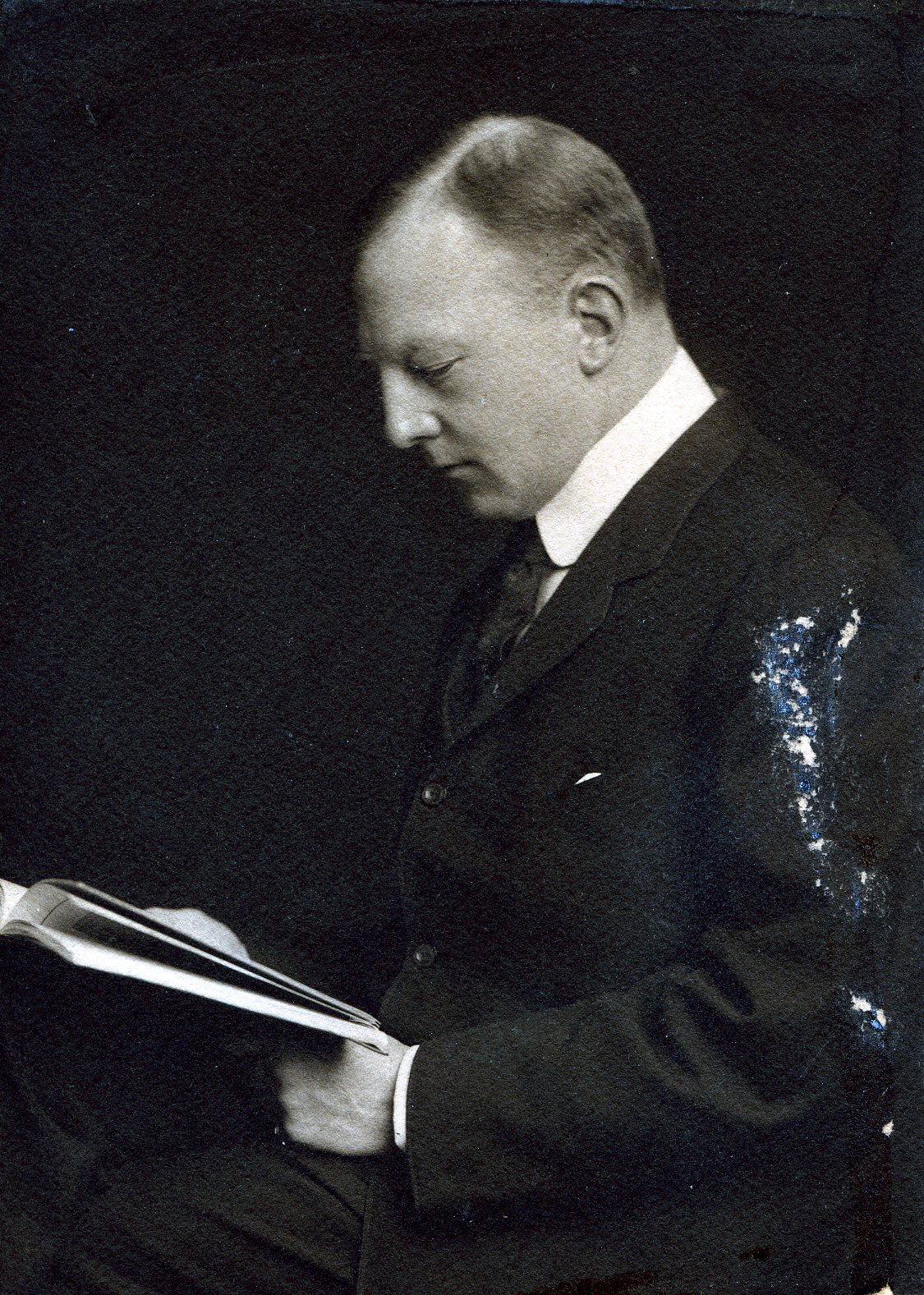Member Directory,
1847 - 1922
William Adams Brown
Professor, Union Theological Seminary
Centurion, 1896–1943
Henry Rutgers Marshall, Henry Codman Potter, and J. Cleveland Cady
New York (Manhattan), New York
New York (Manhattan), New York
Age thirty
Brooklyn, New York

Archivist’s Notes
Son of John Crosby Brown; grandson of William Adams; brother of Thatcher M. Brown; nephew of Eugene Delano; brother-in-law of Edward Caldwell Moore; cousin of Moreau Delano and William Adams Delano; father of William Adams Brown Jr.; uncle of John Crosby Brown Moore
Century Memorial
Son of the Centurion John Crosby Brown and father of an out-of-town member [William Adams Brown Jr.], William Adams Brown was active in this Club for forty-seven years. Since monthly meetings were instituted he has been among the most faithful attendants.
Named for his maternal grandfather the Reverend Doctor William Adams, Presbyterian pastor, president of the Union Theological Seminary, and likewise a Centurion, Brown was comfortably endowed by belonging to a family of long-established international bankers. He inherited an athletic physique, unusual mental powers, undeviating ideals and boundless energy.
To the delight of both parents, young William studied for the ministry at Union Seminary, and won its foreign fellowship. Two years spent on Church History at the University of Berlin under the highly gifted and stimulating Adolf Harnack prepared young Brown to be instructor in this subject at Union. Then came the momentous decision which made Brown spend the next half-century not on Church History but on the more perilous topic of Systematic Theology. In 1893, when he swapped intellectual crafts, Union was in the midst of the bitter controversy over the rights of biblical criticism as taught by a bluff old Centurion, Charles Augustus Briggs; and Brown, naturally irenic, was tossed about where two tides meet. His pupils protested against his first attempts to steer them between the cliffs of Princetonian orthodoxy and the whirlpools of Teutonic criticism; but with dogged persistence Brown stood at the steering-wheel until he brought them safely into the Presbyterian harbor.
Relatively early in his teaching career he produced his “Christian Theology in Outline,” a manual which has had great vogue in the theological schools of not merely Presbyterians, but also of Baptists, Congregationalists, Methodists and many other denominations. The fact that both Presbyterians and Methodists in Canada studied Brown’s treatise helped many of them toward Church Union.
After he had fought his way to success in teaching, he developed through the years a number of personal disciples, eighteen of whom published on the occasion of his retirement in 1936 a volume of essays in his honor: “The Church Through Half a Century.”
Always public spirited, a born joiner and promoter, Brown started in 1893, at the height of the Briggs controversy, Theta, a dining and discussion club of young ministers. At their fiftieth anniversary dinner recently he addressed them. He was among the founders of the Union Settlement on East 104th Street, the other side of the railroad tracks. Under the influence of his doughty pastor Dr. Charles H. Parkhurst he joined in the crusade against the lucrative alliance of the Tammany Tiger with the unspeakable Minotaur, commercialized vice. He was long a member and in the war years 1916–18 the chairman of the Committee of Fourteen.
Brown’s influence spread in ever-widening concentric circles. Ordained to the Presbyterian ministry half a century ago, although he never held a pastorate he has helped thousands of pastors formulate their messages. Though never a missionary, he served for years on the Presbyterian Board of Home Missions, lectured in the Far East on the Christian gospel, and later functioned as president of the trustees of the Woman’s College in Constantinople. He headed also the Near East College Association, and was a member of an official commission to advise on the reform of education in British India.
He became by degrees the leader in North America of the Continuation Committee of the Universal Council for Life and Work, a movement which may be called for short “Stockholm 1925”; he was influential also in the more formal and difficult negotiations of the World Conference on Faith and Order, held in 1927 at Lausanne. Brown was convinced that these two movements, apparently diverse, were fundamentally and logically connected, and he rejoiced when in 1937 the Edinburgh Conference on Faith and Order entered into definite relations with the Oxford Conference in Life and Work.
His interest in Yale was lifelong: he was for seventeen years on the Corporation, for eleven years chairman of its committee on educational policy, and in 1919–20 acting provost of Yale University.
Dying in his seventy-eighth year, this vigorous old man closed with honor the career that he has described so vividly in “A Teacher and His Times,” a truly monumental autobiography.
Geoffrey Parsons
1943 Century Memorials
Related Members
Member Directory Home-
 Eugene DelanoBankerCenturion, 1902–1920
Eugene DelanoBankerCenturion, 1902–1920 -
 William Adams DelanoArchitectCenturion, 1907–1960
William Adams DelanoArchitectCenturion, 1907–1960 -
 John KelmanClergymanCenturion, 1921–1923
John KelmanClergymanCenturion, 1921–1923 -
 Henry Rutgers MarshallArchitect/PsychologistCenturion, 1891–1927
Henry Rutgers MarshallArchitect/PsychologistCenturion, 1891–1927 -
 Roger Bigelow MerrimanAssistant Professor of HistoryCenturion, 1913–1935
Roger Bigelow MerrimanAssistant Professor of HistoryCenturion, 1913–1935 -
 Charles W. PiersonLawyerCenturion, 1918–1934
Charles W. PiersonLawyerCenturion, 1918–1934 -
 Henry Codman PotterClergyman/BishopCenturion, 1869–1908
Henry Codman PotterClergyman/BishopCenturion, 1869–1908 -
 Edward Lincoln SmithClergymanCenturion, 1919–1935
Edward Lincoln SmithClergymanCenturion, 1919–1935






